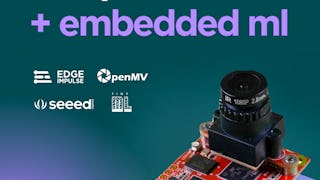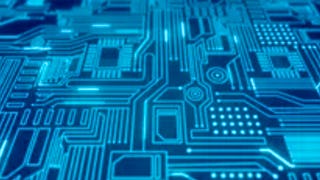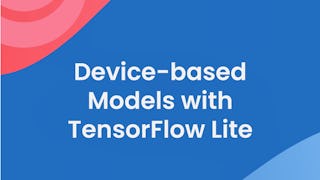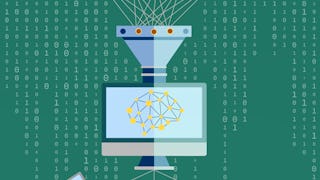Machine learning (ML) allows us to teach computers to make predictions and decisions based on data and learn from experiences. In recent years, incredible optimizations have been made to machine learning algorithms, software frameworks, and embedded hardware. Thanks to this, running deep neural networks and other complex machine learning algorithms is possible on low-power devices like microcontrollers.

Enjoy unlimited growth with a year of Coursera Plus for $199 (regularly $399). Save now.

Introduction to Embedded Machine Learning


Instructors: Shawn Hymel
53,332 already enrolled
Included with
(746 reviews)
Recommended experience
What you'll learn
The basics of a machine learning system
How to deploy a machine learning model to a microcontroller
How to use machine learning to make decisions and predictions in an embedded system
Skills you'll gain
- Digital Signal Processing
- Data Analysis
- Artificial Neural Networks
- Embedded Systems
- Data Ethics
- Deep Learning
- Data Preprocessing
- Embedded Software
- Computer Programming
- Feature Engineering
- Applied Machine Learning
- Model Deployment
- Artificial Intelligence and Machine Learning (AI/ML)
- Convolutional Neural Networks
- Model Evaluation
- Machine Learning
Details to know

Add to your LinkedIn profile
14 assignments
See how employees at top companies are mastering in-demand skills

There are 3 modules in this course
In this module, we will introduce the concept of machine learning, how it can be used to solve problems, and its limitations. We will also cover how machine learning on embedded systems, such as single board computers and microcontrollers, can be effectively used to solve problems and create new types of computer interfaces. Then, we will introduce the Edge Impulse tool and collect motion data for a "magic wand" demo. Finally, we will examine the various features that can be calculated from this raw motion data, including root mean square (RMS), Fourier transform, and power spectral density (PSD).
What's included
13 videos15 readings5 assignments2 discussion prompts
In this module, we will look at how neural networks work, how to train them, and how to use them to perform inference in an embedded system. We will continue the previous demo of creating a motion classification system using motion data collected from a smartphone or Arduino board. Finally, we will challenge you with a new motion classification project where you will have the opportunity to implement the concepts learning in this module and the previous module.
What's included
10 videos10 readings5 assignments1 discussion prompt
In this module, we cover audio classification on embedded systems. Specifically, we will go over the basics of extracting mel-frequency cepstral coefficients (MFCCs) as features from recorded audio, training a convolutional neural network (CNN) and deploying that neural network to a microcontroller. Additionally, we dive into some of the implementation strategies on embedded systems and talk about how machine learning compares to sensor fusion.
What's included
9 videos7 readings4 assignments1 discussion prompt1 plugin
Offered by
Explore more from Machine Learning
 Status: Preview
Status: PreviewEdge Impulse
 Status: Preview
Status: Preview Status: Free Trial
Status: Free TrialDeepLearning.AI
 Status: Preview
Status: PreviewDuke University
Why people choose Coursera for their career




Learner reviews
746 reviews
- 5 stars
81.76%
- 4 stars
16.21%
- 3 stars
1.87%
- 2 stars
0%
- 1 star
0.13%
Showing 3 of 746
Reviewed on Sep 23, 2021
Thanks for detailed and well introduced topics, I enjoyed this course. I had prior knowledge in neural networks but this course was awsome for introducting ML for microcontrollers.
Reviewed on Jul 11, 2022
Highly recommended for anyone looking for embedded AI. For any starter, intermediate or advanced guys!
Reviewed on Aug 16, 2021
wonderful course for those who wish to begin their machine learning / embedded device journey.Highly recommended

Open new doors with Coursera Plus
Unlimited access to 10,000+ world-class courses, hands-on projects, and job-ready certificate programs - all included in your subscription
Advance your career with an online degree
Earn a degree from world-class universities - 100% online
Join over 3,400 global companies that choose Coursera for Business
Upskill your employees to excel in the digital economy
Frequently asked questions
No hardware is required to complete the course. However, we recommend purchasing an Arduino Nano 33 BLE Sense in order to do the optional projects. Links to sites that sell the board will be provided in the course.
We recommend having some experience with embedded systems (such as programming an Arduino board or other microcontroller) and familiarity with the C/C++ language(s). No prior machine learning knowledge is required (but if you do have some, this course might be a good review). You will be required to use some math (reading plots, arithmetic, and algebra) to complete the quizzes and projects.
To access the course materials, assignments and to earn a Certificate, you will need to purchase the Certificate experience when you enroll in a course. You can try a Free Trial instead, or apply for Financial Aid. The course may offer 'Full Course, No Certificate' instead. This option lets you see all course materials, submit required assessments, and get a final grade. This also means that you will not be able to purchase a Certificate experience.
More questions
Financial aid available,

